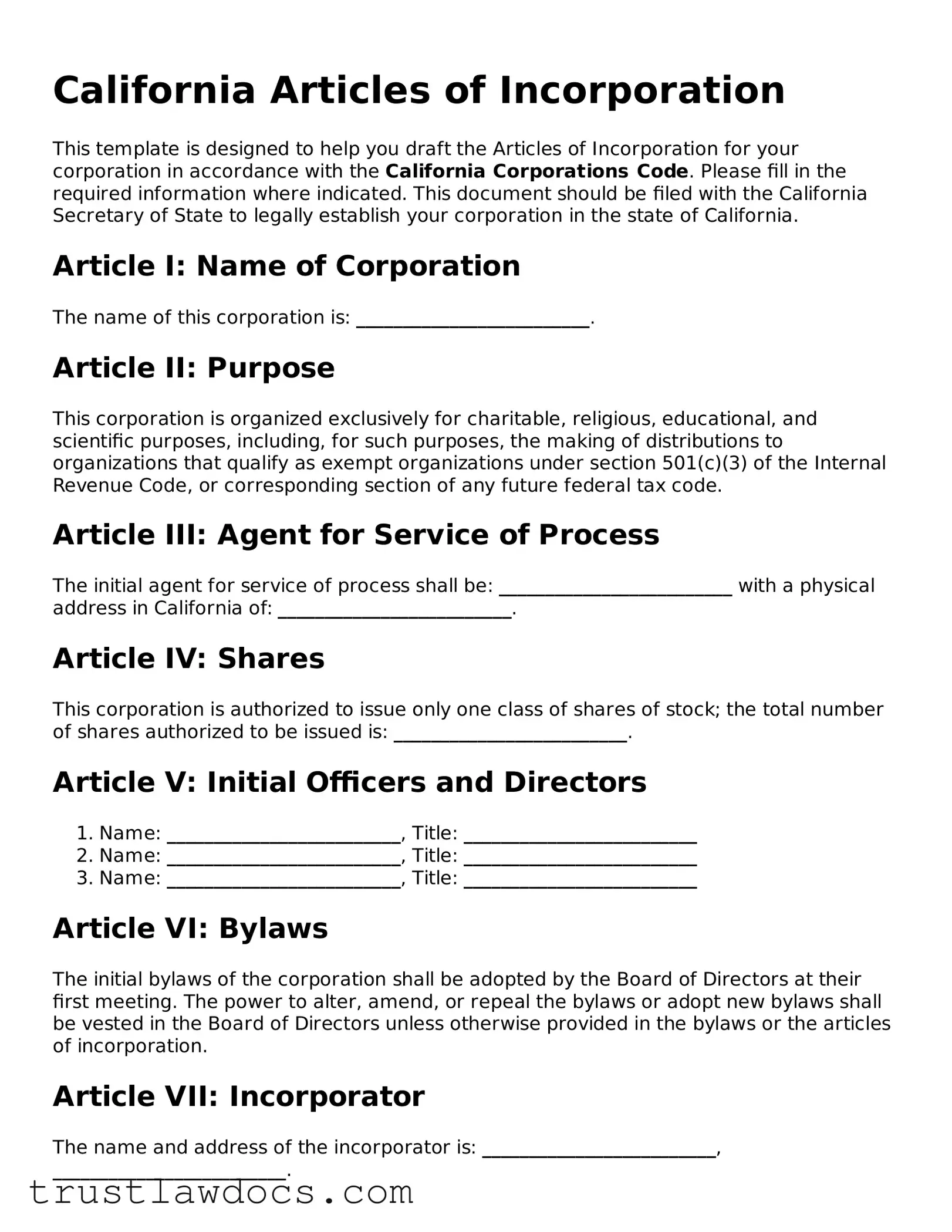California Articles of Incorporation
This template is designed to help you draft the Articles of Incorporation for your corporation in accordance with the California Corporations Code. Please fill in the required information where indicated. This document should be filed with the California Secretary of State to legally establish your corporation in the state of California.
Article I: Name of Corporation
The name of this corporation is: _________________________.
Article II: Purpose
This corporation is organized exclusively for charitable, religious, educational, and scientific purposes, including, for such purposes, the making of distributions to organizations that qualify as exempt organizations under section 501(c)(3) of the Internal Revenue Code, or corresponding section of any future federal tax code.
Article III: Agent for Service of Process
The initial agent for service of process shall be: _________________________
with a physical address in California of: _________________________.
Article IV: Shares
This corporation is authorized to issue only one class of shares of stock; the total number of shares authorized to be issued is: _________________________.
Article V: Initial Officers and Directors
- Name: _________________________, Title: _________________________
- Name: _________________________, Title: _________________________
- Name: _________________________, Title: _________________________
Article VI: Bylaws
The initial bylaws of the corporation shall be adopted by the Board of Directors at their first meeting. The power to alter, amend, or repeal the bylaws or adopt new bylaws shall be vested in the Board of Directors unless otherwise provided in the bylaws or the articles of incorporation.
Article VII: Incorporator
The name and address of the incorporator is: _________________________, _________________________.
Declaration
We, the undersigned, declare under penalty of perjury under the laws of the State of California that the foregoing is true and correct.
Executed on this __________ day of ________________, 20____ at ________________________, California.
Signature of Incorporator: __________________________
Print Name of Incorporator: __________________________
